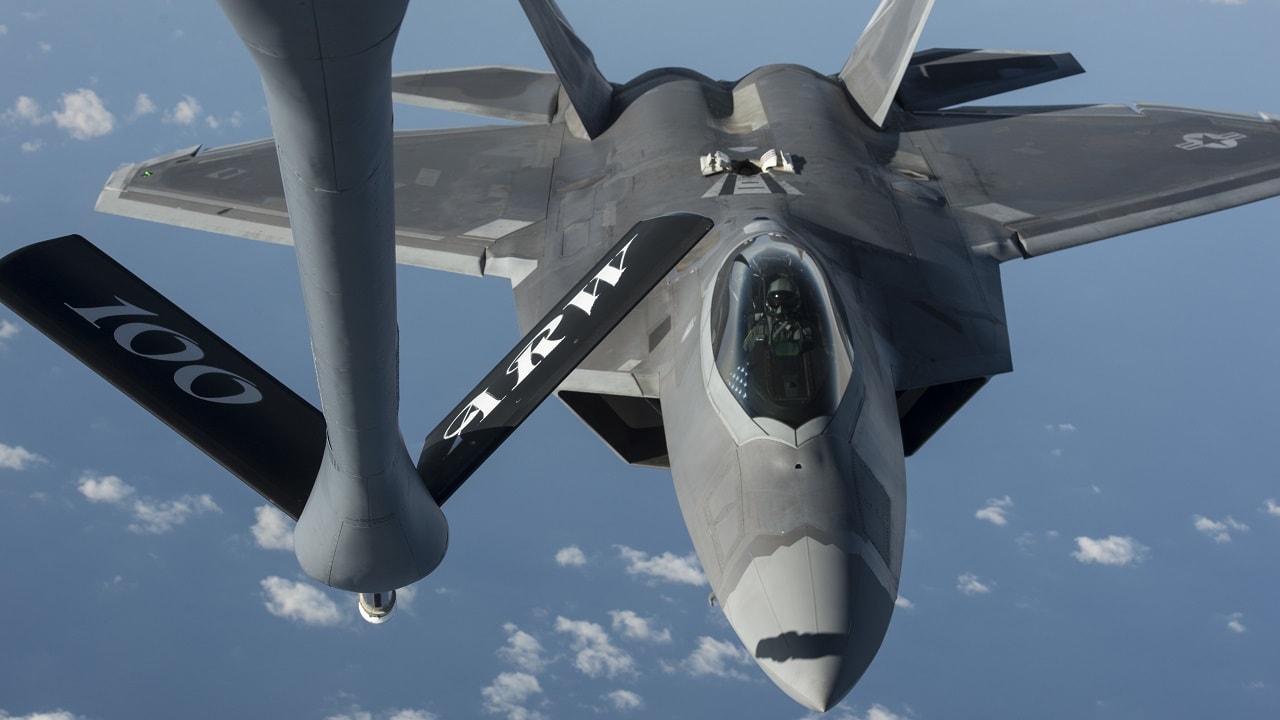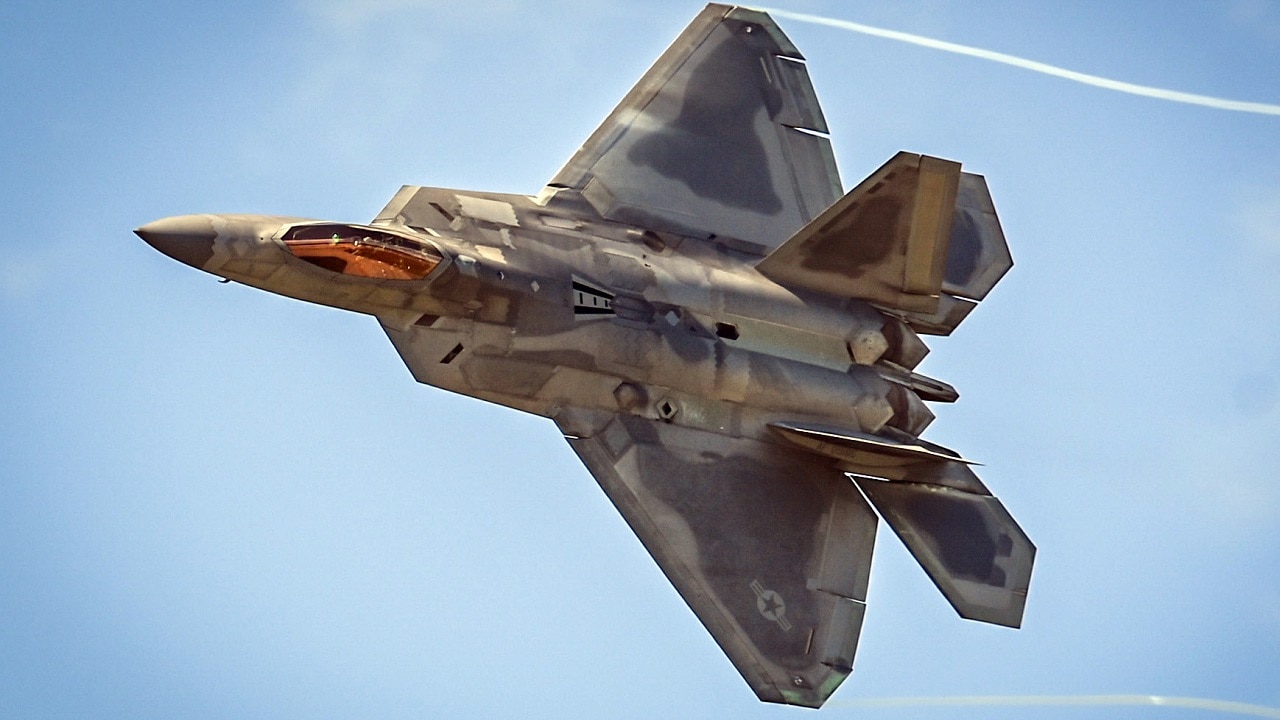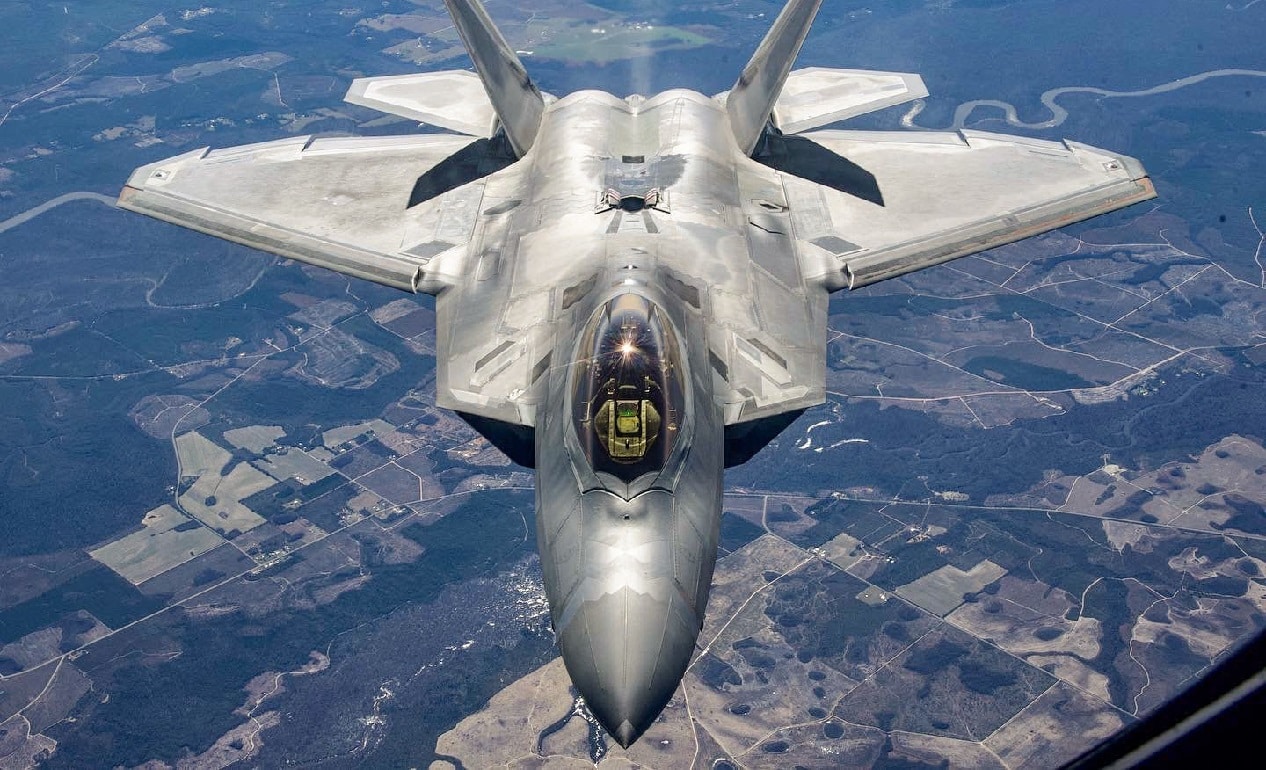Key Points and Summary: The US Air Force is investing over $1 billion to upgrade its F-22 Raptor fleet, ensuring its continued dominance until the Next Generation Air Dominance (NGAD) fighter enters service.
-Raytheon received a major contract to enhance the Raptor’s sensor suite, including advanced infrared threat-detection sensors from Lockheed Martin.
-These upgrades, along with improvements to pilot helmets, communications, and electronic protection systems, will maintain the F-22’s edge in air combat.
-Despite previous plans for early retirement of some airframes, the Air Force now intends to keep the Raptor as the cornerstone of its fighter fleet until the arrival of the NGAD in the next decade.
F-22 Raptor Gets $1 Billion Upgrade: Keeping the Stealth Fighter Sharp
To keep the F-22 relevant and combat-capable until the Next Generation Air Dominance (NGAD) fighter comes online, the flying branch awarded RTX’s Raytheon a contract for upgrading the Raptor’s sensor suite.
The announcement from the Department of Defense is as follows:
“Raytheon Co., McKinney, Texas, was awarded a not-to-exceed $1,045,597,364 fixed-price-incentive (firm-target), undefinitized contract for Group B hardware, spares, and support equipment. This contract provides for the F-22 sensor enhancements program that is designed to improve the F-22 sensor capabilities. Work will be performed in McKinney, Texas, and is expected to be completed by May 8, 2029.”
Furthermore, “this contract was a sole source acquisition. Fiscal 2022 aircraft procurement funds in the amount of $4,413,657; fiscal 2023 aircraft procurement funds in the amount of $221,000,000; and fiscal 2024 aircraft procurement funds in the amount of $11,300,000 are being obligated at the time of the award. The Air Force Life Cycle Management Center, Wright Patterson Air Force Base, Ohio, is the contracting activity (FA8611-24-C-B001).”
Additional Upgrades
Other upgrades for the Air Force’s F-22 fleet would include a new pilot helmet, as well as flight, communications, and electronic protection systems.
Most recently, Lockheed Martin explained that the newest upgrades to the Raptor will be advanced infrared threat-detection sensors.
“The F-22 will soon feature a newly developed, distributed set of embedded TacIRST sensors developed by Lockheed Martin to enhance aircraft survivability and lethality, known as the Infrared Defensive System (IRDS),” Lockheed said in a company statement.

A U.S. Air Force F-22 Raptor pilot from the 95th Fighter Squadron, Tyndall Air Force Base, Fla., flies over the Baltic Sea Sept. 4, 2015. The U.S. Air Force has deployed four F-22 Raptors, one C-17 Globemaster III, approximately 60 Airmen and associated equipment to Spangdahlem Air Base, Germany. While these aircraft and Airmen are in Europe, they will conduct air training with other Europe-based aircraft. (U.S. Air Force photo by Tech. Sgt. Jason Robertson/Released)
“In addition to managing integration of IRDS on the F-22, the company will also support integration on other platforms.”
Abandoned Sunset
Previously, the U.S. Air Force had indicated a desire to return some of their older F-22 airframes as a way to save on costs. However, that plan no longer seems to be the case. Instead, the Air Force wants to squeeze as much life out of their Raptors as possible, at least until the Next Generation Air Dominance platform enters service.
F-22 Raptor
The U.S. Air Force is the sole operator of the F-22, as Congress banned its export to other countries, even close allies of the United States. Though now the Raptor is capable of air-to-ground missions, the fifth-generation stealth fighter was initially envisioned as a purely air superiority fighter.
And though its specialized stealth coatings are difficult and costly to maintain, its ability to gain the upper hand, especially in long-range fights, is virtually without parallel.

A U.S. Air Force F-22 Raptor from the 95th Fighter Squadron, Tyndall Air Force Base, Fla., moves into position behind a KC-135 Stratotanker from the 100th Air Refueling Wing, RAF Mildenhall Air Base, England, to conduct aerial refueling Sept. 4, 2015, over the Baltic Sea. The U.S. Air Force has deployed four F-22 Raptors, one C-17 Globemaster III, approximately 60 Airmen and associated equipment to Spangdahlem Air Base, Germany. While these aircraft and Airmen are in Europe, they will conduct air training with other Europe-based aircraft. (U.S. Air Force photo by Tech. Sgt. Jason Robertson/Released)
Thanks to the end of the Cold War and the cessation of hostilities between the United States and the Soviet Union, the pressing need for the U.S. Air Force to have a sizable fifth-generation air superiority fighter fleet dropped dramatically.
Like other Department of Defense projects following the collapse of the Soviet Union, the F-22 Raptor program experienced severe curtailing.
Rather than buying the originally desired amount of 750 F-22s, the Air Force instead bought just 195 Raptors. The jet’s production line was subsequently closed as a cost-saving measure.
Until the Air Force’s Next Generation Air Dominance fighter comes online, the F-22 will remain the keystone of the United States’ fighter fleet.

Maj. Joshua “Cabo” Gunderson, F-22 Raptor Demonstration Team commander, performs at the Thunder Over New Hampshire Air Show at Pease Air National Guard Base in Portsmouth, N.H., Sept. 11, 2021. The mission of the F-22 Demonstration Team is to showcase the unmatched maneuverability of the Air Force’s 5th generation air dominance stealth fighter, highlight the history of the Air Force’s service though heritage formation flights, and interact with local communities through outreach events. (U.S. Air National Guard photo by Tech. Sgt. Steven Tucker)
The rollout of that sixth-generation aircraft will take place sometime in the next decade — and until then, the U.S. Air Force will rely on the Raptor.
About the Author: Caleb Larson
Caleb Larson is an American multiformat journalist based in Berlin, Germany. His work covers the intersection of conflict and society, focusing on American foreign policy and European security. He has reported from Germany, Russia, and the United States. Most recently, he covered the war in Ukraine, reporting extensively on the war’s shifting battle lines from Donbas and writing on the war’s civilian and humanitarian toll. Previously, he worked as a Defense Reporter for POLITICO Europe. You can follow his latest work on X.

